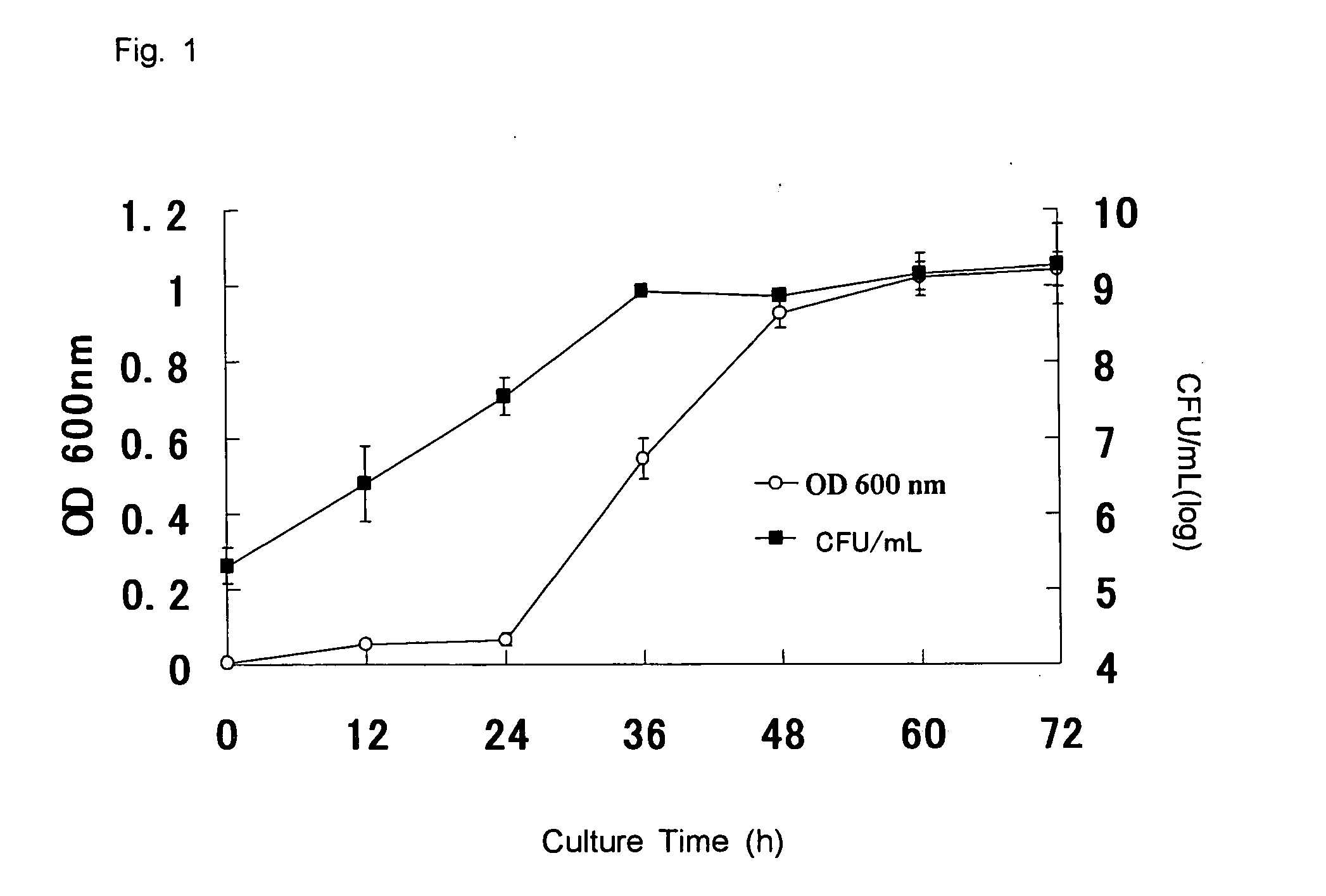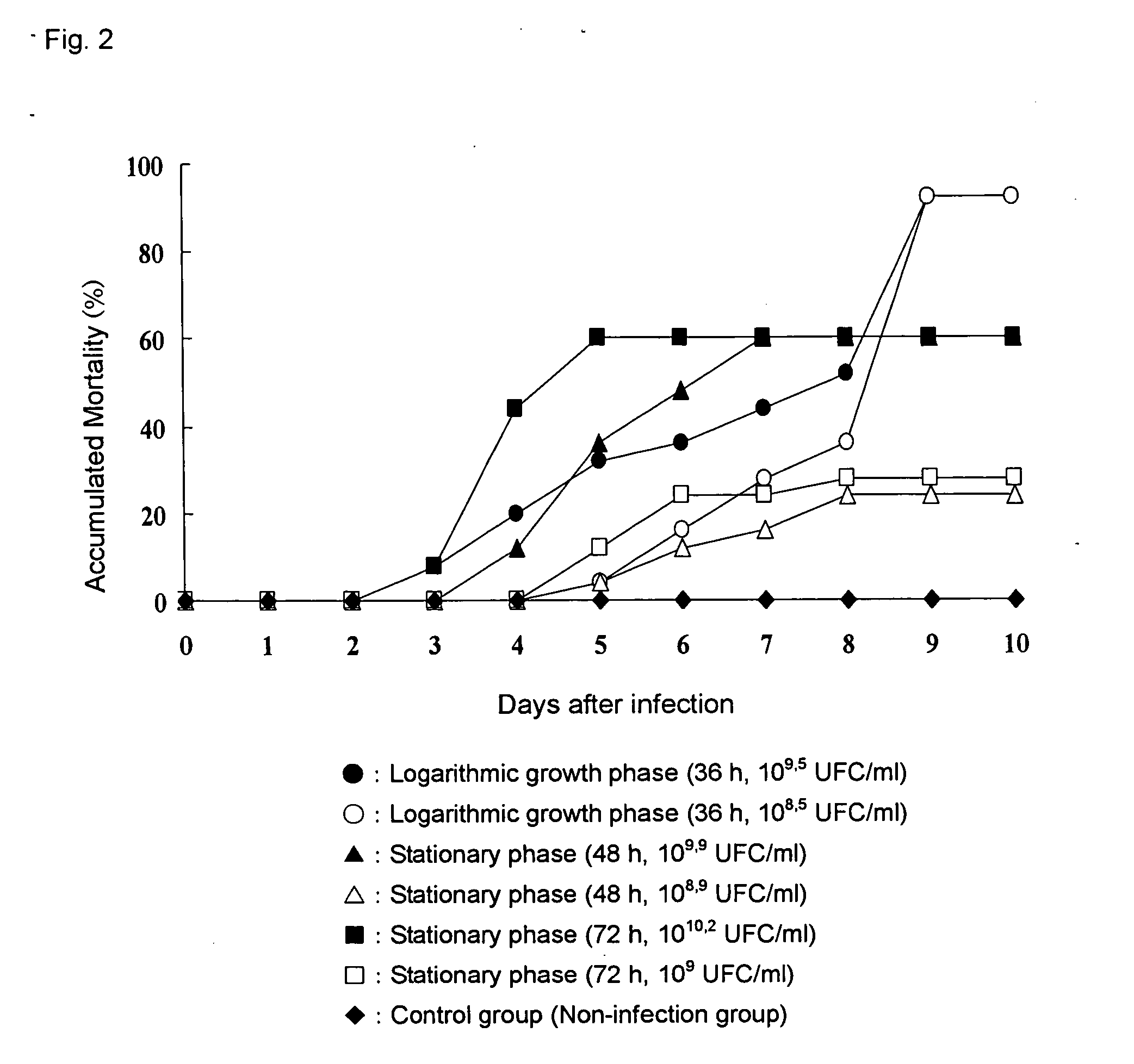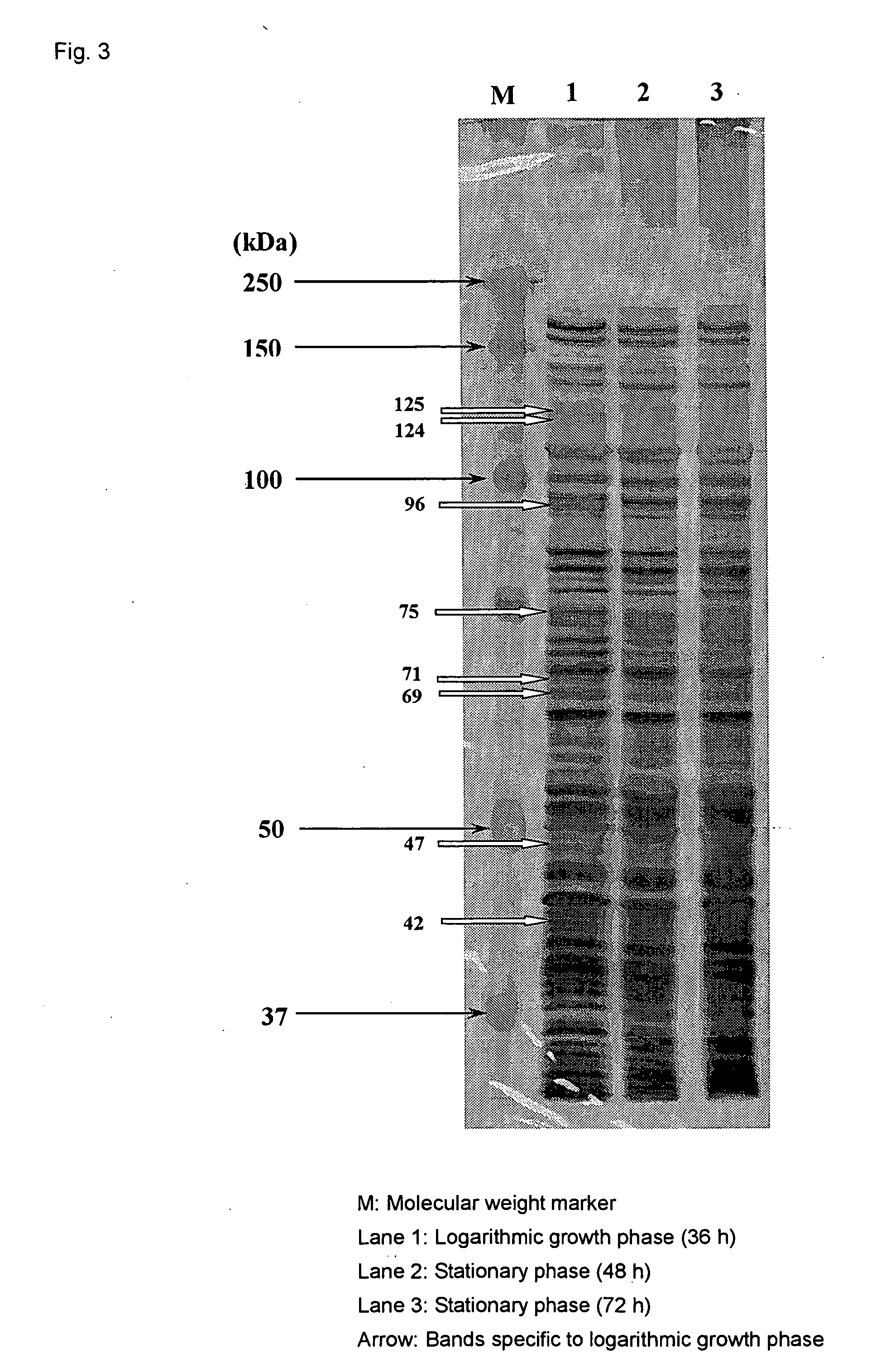Vaccine for fish cold-water disease
a cold-water disease and vaccine technology, applied in the field of fish cold-water disease vaccines, can solve the problems of uneconomical treatment, ulcers remain on the surface of fish, and the water temperature rise above 25° c., and no vaccines against this disease have been developed
- Summary
- Abstract
- Description
- Claims
- Application Information
AI Technical Summary
Benefits of technology
Problems solved by technology
Method used
Image
Examples
example 1
[0035] (1) Cells of Flavobacterium psychrophilium G3724 (this strain was used in the experiments hereinafter) contained in a platinum loop were inoculated on a 4-mL MCYT culture medium (trypton 2.0 g, yeast extract 0.5 g, meat extract 0.2 g, sodium acetate 0.2 g, calcium chloride 0.2 g, distilled water 1000 mL, pH 7.2). After cultivation at 15° C. for 2 days, a 0.5-mL fraction of the culture medium was inoculated on a 200-mL MCYT culture medium followed by cultivation with shaking at 15° C. The relationship between the cultivation time, and the cell number and optical density at 600 nm is shown in FIG. 1. FIG. 1 shows that the lag phase is from 0 to 24 hours after inoculating, the logarithmic growth phase is 24 to 48 hours after inoculating, and the stationary phase is after 48 hours from inoculating in the bacteria of the present invention.
[0036] (2) The differences in pathogenicity of the bacteria of the present invention depending on the culture conditions were investigated. The...
example 2
[0040]Flavobacterium psychrophilium G3724 was cultured in 1000 mL of the MCYT culture medium contained in a 2000-mL Sakaguchi flask at 15° C. The cells showing OD 0.2 to 0.7 at 600 nm were used as the bacterial cells in the logarithmic growth phase. Then, the cells as a culture product at a growth phase showing OD of 0.2 to 0.7 at 600 nm in the culture period of 24 to 36-hour were inactivated by incubation in 0.3% formalin at 15° C. for 2 days, and the inactivated bacterial cells were isolated by centrifugation at 4° C. and 8,000 to 10,000×g. The bacterial cells in the stationary phase after 36-hour cultivation (OD600 nm=1.0) were also inactivated by the same method as described above to obtain inactivated bacterial cells as controls.
example 3
[0041] Cells of Flavobacterium psychrophilium G3724 contained in a platinum loop was inoculated on 50 mL of the MCYT culture medium and pre-cultured at 15° C. for 48 hours. A 2.5-mL fraction of this culture medium was inoculated on 1000 mL of the MCYT culture medium, followed by culture at 15° C. for 36 hours. OD at 600 nm was 02 to 0.7. The culture product was incubated in 0.3% formalin at 15° C. for 2 days. The bacterial cells were then collected by centrifugation at 8,000 to 10,000×g at 4° C. The cells obtained were re-suspended in physiological saline containing 0.3% formalin to obtain a vaccine suspension containing the inactivated bacterial cells of the present invention.
PUM
| Property | Measurement | Unit |
|---|---|---|
| temperature | aaaaa | aaaaa |
| pH | aaaaa | aaaaa |
| pH | aaaaa | aaaaa |
Abstract
Description
Claims
Application Information
 Login to View More
Login to View More - R&D
- Intellectual Property
- Life Sciences
- Materials
- Tech Scout
- Unparalleled Data Quality
- Higher Quality Content
- 60% Fewer Hallucinations
Browse by: Latest US Patents, China's latest patents, Technical Efficacy Thesaurus, Application Domain, Technology Topic, Popular Technical Reports.
© 2025 PatSnap. All rights reserved.Legal|Privacy policy|Modern Slavery Act Transparency Statement|Sitemap|About US| Contact US: help@patsnap.com



